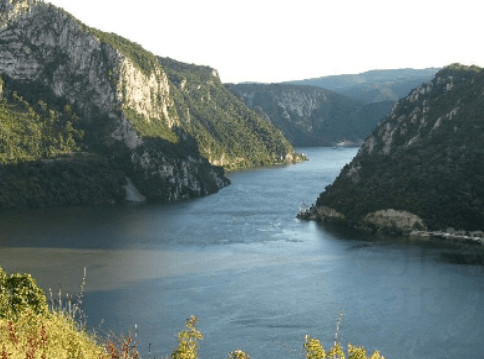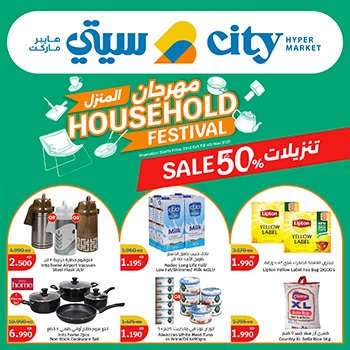
• Serbia invites you to explore vibrant cities, tranquil villages, refreshing spas, majestic rivers, historic monuments, and lively festivals. Discover regions where nature’s beauty is untouched and boundless on your journey through this diverse land.
Picture yourself gazing in awe from a lookout above Europe’s largest canyon, feeling the thrill as you conquer the wild river rapids. Hear a trumpet’s powerful notes resonate through your soul, savor the rich flavors of local wine, and relax in healing spa waters. Marvel at the grand frescoes of an ancient Orthodox monastery and the intricate beauty of prehistoric figurines. Experience the genuine warmth of a stranger calling you ‘brother’ and ‘friend.’ This is the heart of Serbia.
From this land, paths lead you to vibrant cities, serene villages, rejuvenating spas, majestic rivers, historic monuments, and lively festivals. Embark on a journey through regions where nature’s beauty remains untouched and immeasurable. Immerse yourself in a culture nurtured for centuries and feel secure as you bask in genuine hospitality. Discover Serbia by tasting, smelling, listening, and touching every aspect of its rich heritage.
Belgrade – A city that never sleeps

There’s an undeniable allure to Belgrade, both thrilling and mysterious. Here, the Sava River gracefully merges with the Danube, and the flat Pannonian plain begins to rise into rolling hills and mountains. Positioned at the crossroads of diverse cultural influences, Belgrade is a city that never sleeps. Its unique charm lies in its ability to embrace a variety of, at times, conflicting ideas and worldviews. You can feel the spirit of Belgrade in its streets, architecture, monuments, parks, and, most of all, in the warmth and openness of its people.
Knez Mihailova Street – Custodian of Belgrade’s rich identity

Knez Mihailova Street, located in the heart of the city, is more than just a shopping district; it serves as a custodian of Belgrade’s rich identity. Lined with distinguished buildings, each one narrates a chapter in the city’s history. This central pedestrian area, along with its neighboring streets, is brimming with restaurants, cafes, galleries, and boutiques, while street performers add to the vibrant and captivating ambiance.
Kalemegdan – Timeless and romantic charm

Kalemegdan, Belgrade’s largest city park, continues to captivate visitors with its timeless, romantic charm. The restaurants, largely unchanged over the years, offer an authentic experience of Serbian cuisine, accompanied by traditional music from that era. The park is also the site of the historic Belgrade Fortress.
As you stroll through Kalemegdan, you’re treated to stunning views of the Sava and Danube rivers merging, as well as a journey through centuries of history, from Roman times to the present day. Within this vast space, you’ll encounter the iconic Victor monument, a symbol of the city, as well as the Belgrade Zoo, the Military and Natural History Museums, Ružica Church, and St. Petka’sChapel. At the base of the fortress, along the Sava River, lies Beton Hala, a series of old customs warehouses transformed into a hub of excellent restaurants.
Niš – The birthplace of Roman Emperor Constantine the Great

Niš, a city that has evolved from ancient Roman times to the present, continues to captivate with its rich history and vibrant culture. As the birthplace of Roman Emperor Constantine the Great, who established Christianity as the Roman Empire’s official religion, Niš is home to the archaeological site of Mediana, showcasing the grandeur of his era.
For adventure seekers, the Suva Planina mountain, NišavaRiver, and the dramatic Sićevačka and Jelašnička gorges offer opportunities for rafting, paragliding, and hiking. Notable sites include the historic Hydroelectric Power Plant ‘St. Petka,’ designed by Nikola Tesla, the poignant Skull Tower, and the Red Cross concentration camp, which preserves the memory of WWII victims.
Novi Sad – Where life moves at a serene and unhurried pace

In Novi Sad, life moves at a serene and unhurried pace. The best way to experience the city is by leisurely exploring its galleries, museums, the majestic Petrovaradin Fortress, tranquil river beaches, and charming streets lined with inviting restaurants and coffee bars. In Novi Sad, the art of taking things slow is an integral part of its elegance.
Skadarlija – The old bohemian quarter

Skadarlija, the old bohemian quarter dating back to the early 20th century, continues to captivate visitors with its timeless, romantic charm. The restaurants, largely unchanged over the years, offer an authentic experience of Serbian cuisine, accompanied by the melodies of traditional music from that era.
Danube – The river giant of Europe

This mighty river, second only to the Volga in Europe, is truly cosmopolitan, flowing through four European capitals and ten different countries. It carries the vibrant energy of cities and the echoes of ancient civilizations, from Neolithic cultures to Roman cities and medieval fortresses along its banks.
As the Danube journeys through Serbia, it showcases its versatility: it spreads across the vast Pannonian Plain, meanders through the dense forests and wetlands of the UNESCO-protected Bačko Podunavlje Biosphere Reserve, glides past sandy shores, and playfully winds around the Fruška Gora mountain range. Near DeliblatskaPeščara, the Danube almost becomes an inland sea. Itsmost breathtaking transformation, however, occurs at Golubac, where it carves through the Carpathian Mountains, creating stunning, dramatic landscapes.
Majestic Golubac Fortress –Serbia’s most iconic landmarks

Perched on the banks of the Danube River, GolubacFortress is one of Serbia’s most iconic landmarks. This medieval stronghold, with its towering walls and strategic location at the entrance to the Đerdap Gorge, offers visitors a journey back in time.
Recently restored to its former glory, the fortress provides breathtaking views of the Danube and the surrounding landscape. As visitors explore its nine towers, they can imagine the battles and sieges that shaped this historic site. Golubac is not just a historical monument but also a gateway to the Đerdap National Park, home to the stunning Iron Gates gorge.
Drina River – A symbol of the region’s rich cultural heritage

For adventure seekers, the Drina River offers one of the best rafting experiences in the Balkans. The Drina’s emerald waters, winding through lush forests and steep cliffs, provide both challenging rapids and serene stretches, making it ideal for both seasoned rafters and beginners.
The rafting route takes you through some of the most scenic parts of Serbia, including the dramatic Tara Canyon, offering unparalleled views of untouched nature. The Drina River is not only a natural border between Serbia and Bosnia and Herzegovina but also a symbol of the region’s rich cultural heritage.
Exploring Serbia’s rich cultural heritage through museums
Serbia’s museums are a treasure trove of history, innovation, and culture, offering insights into the country’s past and present.

• Museum of Yugoslavia: This museum offers a deep dive into the history of Yugoslavia, focusing on the life and legacy of Josip Broz Tito, the country’s long-time leader. The museum complex includes Tito’s mausoleum, known as the House of Flowers, and exhibits that tell the story of a nation that once united the diverse cultures of the Balkans.

• Novak Djokovic Museum: Serbia’s pride and one of the greatest tennis players of all time, Novak Djokovic, is celebrated in this museum. It features memorabilia from his illustrious career, including trophies, rackets, and personal items, offering fans a closer look at the life of a sports icon.

Mysterious Đavolja Varoš (Devil’s Town)

Đavolja Varoš, or Devil’s Town, is one of Serbia’s most peculiar and fascinating natural wonders. Located in southern Serbia, this eerie landscape features over 200 unique rock formations, some towering up to 15 meters high. These pillars, created by erosion over centuries, resemble a town of stone figures and are surrounded by local legends that add to the site’s mystique.
The area also has two natural springs with highly acidic water, known for their unusual taste and believed to have healing properties. A visit to Đavolja Varoš feels like stepping into another world, making it a must-see for nature lovers and curious travelers alike.
The untouched beauty of Uvac Canyon

Uvac Canyon is a masterpiece of nature, renowned for its meandering river and dramatic limestone cliffs. The canyon’s most famous feature is the Uvac River’s unique U-shaped meanders, best viewed from one of the many lookout points high above the river.
Uvac is also home to one of the largest populations of griffon vultures in Europe, making it a prime spot for birdwatching. Boat tours through the canyon offer a close-up view of its stunning geology and the chance to explore hidden caves and ancient rock art. Uvac is a place of tranquility and awe-inspiring beauty, perfect for those looking to escape into nature.
Raška – A cultural crossroads
The Raška region, located in southwestern Serbia, is a unique cultural crossroads where East meets West. This area is home to a significant Bosniak population, and the influence of Ottoman history is evident in the region’s architecture, cuisine, and traditions.

The city of Novi Pazar, the cultural and economic center of Raška, boasts several important Islamic landmarks, including the 16th-century Altun-Alem Mosque and the medieval fortress of Stari Ras, a UNESCO World Heritage site.
Raška’s rich cultural heritage is complemented by its beautiful natural surroundings, making it an ideal destination for those interested in both history and outdoor activities.


















